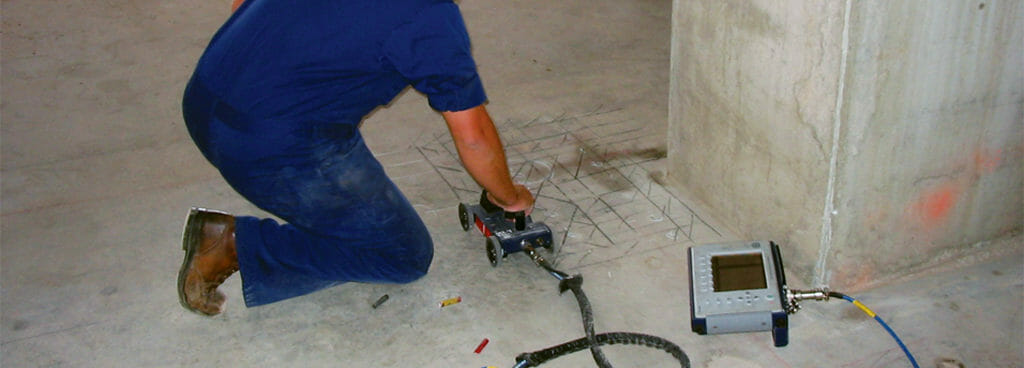- Home
- Special Services
MARINE SERVICES
construction
other services
weld services
- NDT Services
methods
additional services
- About Us
- Locations

IMPORTANCE OF CONCRETE INSPECTIONS
International Inspection, Inc. stands at the forefront of concrete scanning companies due to our expertise in checking slabs for subsurface elements. We recognize that working with previously installed concrete is a dangerous job; the heavy-duty equipment workers use to cut, core, and drill can cause severe injury or even casualty if mishandled. While skilled operators know how to safely and effectively handle these tools, a project can go off the rails quickly without a proper plan in place.
International Inspection, Inc. stands at the forefront of concrete scanning companies due to our expertise in checking slabs for subsurface elements. We recognize that working with previously installed concrete is a dangerous job; the heavy-duty equipment workers use to cut, core, and drill can cause severe injury or even casualty if mishandled. While skilled operators know how to safely and effectively handle these tools, a project can go off the rails quickly without a proper plan in place.
Ground Penetrating Radar
Our expert technicians perform concrete scanning using a nondestructive testing (NDT) method called ground penetrating radar, which helps them find the location and depth of subsurface elements. Often abbreviated to GPR, this technique uses radio waves to detect the location of ferrous subsurface elements, such as rebar, PT cables, conduits, and other metal features. Alternatively, certain manufacturers refer to either the equipment or underlying technology as subsurface interface radar (SIR); although the names may be different, the process is the same. Our concrete inspectors use a handheld radio transducer, connected to a receiver and computer, to perform GPR scanning.
These expert technicians first tune the frequency of the waves they intend to produce based on the type of material they are scanning. Next, they use the transducer to send those finely tuned electromagnetic pulses directly into the slab. They travel through layers of concrete until they hit a distinct material with different electrical characteristics, such as conductivity or dielectric permittivity. While a portion of the energy initially transmitted continues traveling and eventually dissipates, the rest reflects back to the antenna; the computer plots the strength of the reflected energy detected by the receiver, as well as the amount of time it took to return to the antenna, as an image.
Several variables can determine the effectiveness of a GPR scan. Establishing an appropriate survey path can make the difference between finding a utility line and missing it, so our concrete inspection teams devise a route along which they will scan to ensure nothing gets missed. Furthermore, the resulting scan is difficult to interpret accurately. For this reason, International Inspection retains a staff of experienced GPR technicians, who perform and analyze all concrete scanning services that we offer.
Our Concrete Scanning Process
When our inspectors arrive at a site, they walk through and visually assess all areas the client wants them to scan. After setting up their equipment, they perform a preliminary “reconnaissance scan” to calibrate the scanning tools and determine the depth of the slab. Next, they map out the route they will take, either placing a grid sheet to guide them through smaller sections or marking larger areas of interest with chalk lines laying out their path. Once everything has been set, inspectors scan the area, following the path they established to capture the best data. Finally, they lay out their findings on the grid sheet or slab, marking the location and approximate depth of every subsurface feature they detected — results are immediate.
A Note on GPR vs. Concrete Radiography
Certain concrete scanning companies like International Inspection offer a different method for finding subsurface elements including rebar and PT cables. This technique, called concrete radiography, uses X-Rays (like the ones used in the medical field) to create an image showing everything underneath the slab’s surface as if it had been cut into sections. GPR and radiography each have relative strengths and limitations (differences in capabilities, logistics, etc.), making one more appropriate in certain circumstances and less in another. Because International Inspection performs both methods of concrete inspection, we can adapt to your situation. Feel free to talk to us about which technique may be more useful to meet your needs. If your company needs the services of a respected concrete scanning company before you start work, contact International Inspection today. Our expert inspectors can get you the certainty you need to safely and efficiently finish your project.
